1660 Shipwreck will Save the Future
e-mail to a friend | print this | link to this
1 of 5
NEXT ›
‹ PREVIOUS
1660 Dutch Caravel
Provided by: yvonne addario
Contributed by: yvonne addario on 7/27/2009
Local undersea explorer, Captain Dominic Addario, has a contributing answer to assist in the replenishment of Palm Beach County beaches and dunes. This summer they are testing the cost of modifying their excavation technique. The sand they are permitted to excavate through, while searching for artifacts, can be given to local and county agencies for dune replenishment.
There well may be less costly more environmentally compatible ways to combat the ongoing problems of ever rising oceans and the depletion of sand along the Palm Beach County shoreline.
Tens of millions of dollars continue to be spent trucking in sand and relying upon the dredging of inlets, to periodically place sand back onto downstream beaches. The cost to local, state, federal and the peoples of these coastal areas to restore the beaches and dunes - only on a temporary basis is staggering. And, the problem continues. There may be a contributing solution in sight for the town of Jupiter and Palm Beach County, but first you need to know what happened in 1660.
Recap: Jupiter, Florida. One summer morning, in July of 1987, two surfers, Ralph Rossini and Bob Riggs on their morning wave ride, noticed something sticking out of the sand. It looked like an encrusted cannon and anchor. They reported it a Palm Beach County life guard, Peter Leo who swam out 20 yards from the beach to confirm their findings.
The lifeguard wasn't sure as to what to do about the find, other than to take it home and display it on his lawn. He called a good friend of his, Captain Dominic Addario Dominic, who then owned Jupiter Hills Marina. He had the equipment and the logistics to create a base of operations to do further research on the cannon and anchor. Together, Leo and Captain Dom chipped away at the encrustation holding the cannon in place enough to free and then raise it from its watery grave. They took it to Addario's marina. Addario also found a Spanish copper bucket. It was attached to the cannon. In an attempt to find out what period of time these artifacts came from, Addario contacted the Smithsonian Museum and then a director of the local Jupiter Historical Museum and offered to donate their finds after proper preservation.
The following day, the two went back to the site to see what else was there. Hand digging in the sand, they found more cannons, and then their first coin, a silver piece of eight dated 1658. Dominic contacted Jim Sinclair, then metal preservationist working for Treasure Salvors, from Key West and described what they had found. Sinclair said, "I think you better get yourself a lawyer." Addario did, hiring David Horan, the same lawyer who successfully defended Mel Fisher against Florida's claim to the Spanish galleon, the Atocha and Santa Margareta
On July 27, 1987 Addario placed an admiralty claim in the U.S. Southern District Court, but not without resistance from the state of Florida. Captain Addario was appointed the first Federal Substitute Custodian of the abandoned shipwreck site. Later, the court substituted Jupiter Wreck Inc. (JWI), a newly formed Florida corporation for Captain Dominic Addario's name.
It was the states sand the shipwreck was in. A deal was made. The state of Florida would receive twenty percent of the finds. Having the right to the wreck site was only a small part of the newly historical research and recovery process. At first they were only allowed to dive, photograph and map the wreck site. Hand fanning was the only means to uncovering artifacts. With the assistance of archeologists, they submitted reports to the state, that had satisfied them enough to allow the salvers to begin to mechanically excavate the site,
Coins. Lots of Spanish colonial coins dated 1652 - 1659 began to surface. They had been minted in Potosi, Bolivia, Lima, Peru, Mexico and Santa fe de Bogotá, Columbia and were being brought up to see the light of day. They found gold coins, two-five pounds bars of gold and a single seventy-eight pound silver ingot numbered 820. Two eleven-foot anchors, and ten more cannon, weighing 800 to over 2,000 pounds and varied in sizes along with many cannon balls, musket balls, two brass navigational dividers, miscellaneous ship's parts, such as firearms and by-the-way more treasure! Captain Dom and Leo realized they had a Spanish ship. They traveled to Spain to learn of its origins by researching at the "Casa de Contratación" or house of trade under the guidance of head researcher Victoria Staples Johnson and Doctor Eugene Lyons as the historian.
Fifteen thousand coins, mostly silver have been found thus far by Jupiter Wreck Inc., yet, they have not found enough of the ship carrying silver and gold to account for its main cultural deposit. This exciting and what seemed to be easy pickings of artifacts, soon turned into a very costly and time consuming event.
Excavating this wreck began to present new challenges. The traditional hand fanning, hammers and chisels weren't enough. Positioning gear, sub-bottom profilers, magnetometers, fathometer, side-scan sonar, metal detectors, preservation tanks and larger boats having massive prop washing blowers on the stern were necessary. Having the equipment and manpower was still not enough. The months blew by summer winds and turned the ocean waters colder and with large swales of waves making salvaging efforts come to a snails pace.
Recovery efforts have been in progress each year, pending on permits to allow salvors to move sand. When to salvage and for how long each session is, is determined by two factors; funding and weather. An average minimum of $15,000.00 to sometimes up to $50,000.00 a month is needed to mount a major salvage expedition. And, the best time of year to work is in the summer months when the oceans lay flat.
For each salvaging year, the process becomes harder and more costly. Why? Because, the easiest of the finds were once found in only ten feet of water and in ten feet of sand. Now, twenty-three years later it has become inevitable that a pumping and sifting devices must be used to get down to the bottom where Captain Dom believes the rest of the shipwreck lays. (See cross-sectional drawing)
It only stands to reason that with only 15,000 artifacts recovered, there are not enough of the ship's remains to claim salvaging efforts to end. With the help of researchers and Addario's hypothesis, there was still much more to be found. The only problem was that is buried so deep, removing the sand had to go some where. Knowing that Palm Beach County has a major dune & beach erosion problem brought Captain Dom to make a logical assumption. It may be contributing solution to help cure the accelerating erosion problems with the very sand they are digging through - while looking for the rest of the ship! As it is, C.H.U.M.S (Coastal Historical Underwater Management Society), Jupiter Coins, LLC, a subcontractor of, and a handful of well established companies are working together in an attempt to make this happen and prove its viability.
Jupiter Coins, LLC has come up with the brilliant idea to use the permits that JWI has already in place and to modify them so as to permit its salvors to place sand over their right shoulder with specialized equipment and pump the sand over the beach and on to the upland dune where it can be stockpiled and later used as the county sees fit for dune replenishment and the bolstering of sea turtle nesting habitats. . The same would go for other locations along the southeastern seaboard. C.H.U.M.S. would help to uncover shipwrecks from all periods of time in close proximity of the beaches. This action serves many purposes. One, it will aid in replenishing beaches and dunes, two, it uncovers valuable history related maritime vessels and debris, helping to educate the public, stimulating on shore reef and baitfish habitats, three, in cooperation of municipalities of the state and local governments placing select historical items into their museums, and finally four, saving tax payers money.
Making this proposal actually happen is not an easy task, even though it makes perfect sense. C.H.U.M.S. is very close to having all the pieces of the puzzle; the proper equipment, staff and reputable business associates in place for this to become real. What may hold up the process are certain financial vested interests, and unfortunately egos with petty quasi-professional interests, who may not wish to see the public educated and an actual contributing "change" occur. Big money is made moving sand about along our shorelines and also studying its placement and movement. The power of some of these 'interest" groups is no more evident than in right here in Palm Beach County with its recent problems with graft amongst its county commission in recent years.
But for change to occur - it takes all of us to become proactive and more knowledgeable about our near shore coastal environment. They plan on filming a documentary to aid in accomplishing this needed step in the process of the people being proper caretakers of our environment.
If you have questions, there is a book written about the wreck, entitled, Treasure Diving with Captain Dom which educates you about the Jupiter Shipwreck. You may get your copy at Barnes and Noble book stores, or go to
http://www.jupitercoins.com/.




 {I don't think they were passing these around} :dont
{I don't think they were passing these around} :dont Here are some photos: a 78 pound ingot of silver, 2 five pound
Here are some photos: a 78 pound ingot of silver, 2 five pound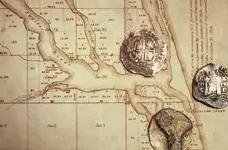
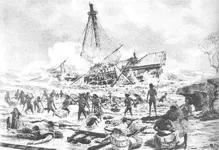
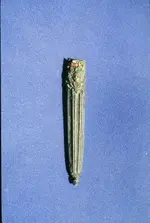
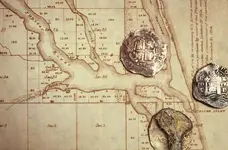
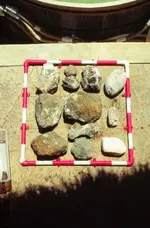
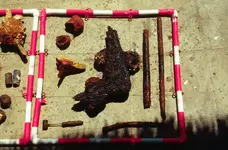





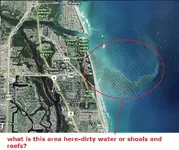
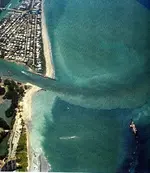

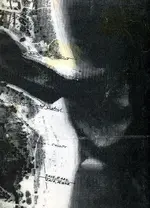
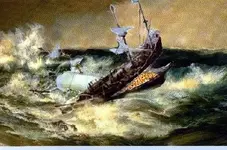

 ) And we will be out too with the "Tank" as soon as I get
) And we will be out too with the "Tank" as soon as I get